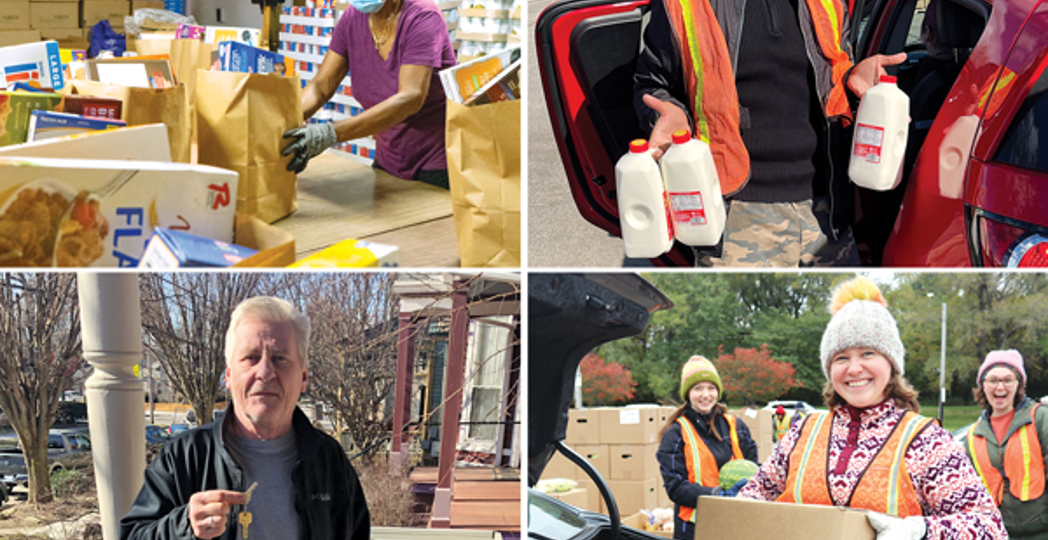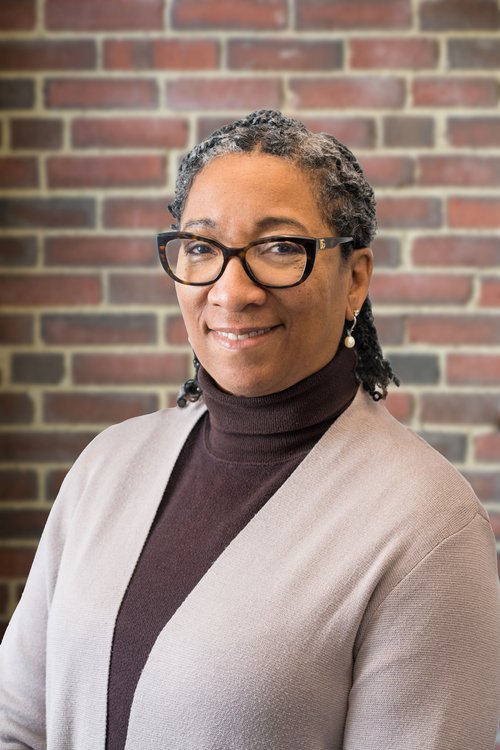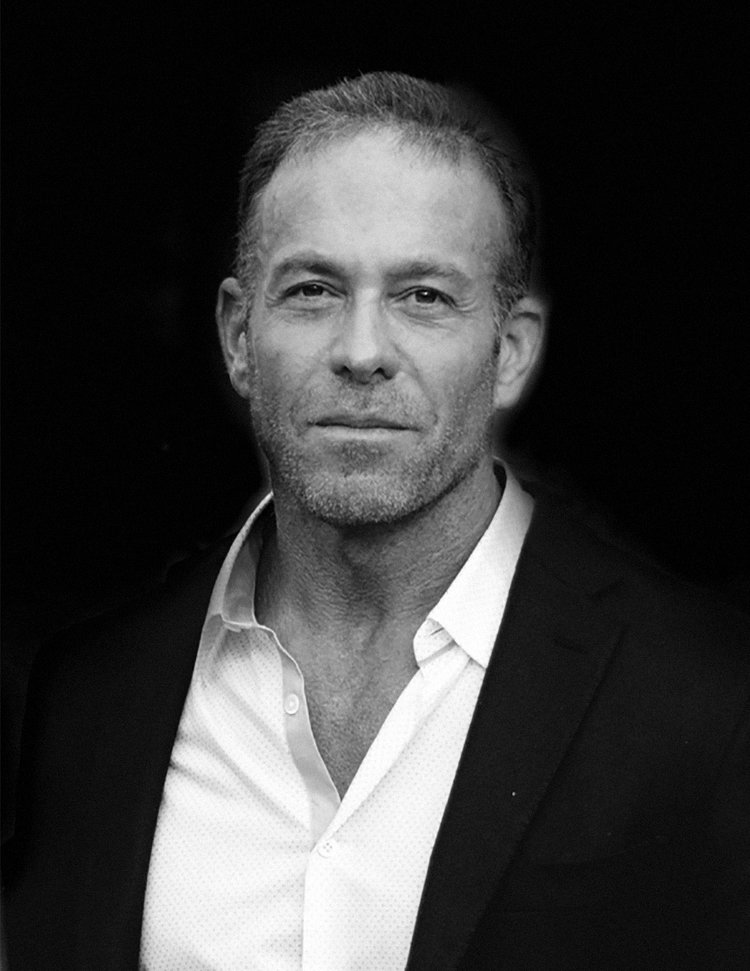How Nonprofits and the Business Community are Working Together to Alleviate Poverty
by Terry Troy | May. 1, 2023 | 4:00 AM

It can be heard in the wail of a hungry infant. It walks aimlessly through dilapidated, decaying neighborhoods. It braces itself against the Greater Cleveland cold in weathered coats stuffed with newspapers. And it is witnessed in the eyes of a young generation racked with despair and hopelessness.
Our vicious cycle of poverty must be stopped. But it’s not going to be easy. It wears many hats, takes many forms and often hides behind our own prejudices and pre-conceived notions.
Greater Cleveland has a long history of poverty. Our numbers are among the worst in the nation.
Emily Campbell, COO of the Center for Community Solutions, reports figures from the U.S. Census Bureau: 105,000 people in the City of Cleveland lived in poverty in 2021. More than 33,500 of those were children. At 45.5%, Cleveland has the highest child poverty rate of any large U.S. city with a population greater than 300,000. We edged out Detroit and are only second in working age poverty. We are fourth in older age poverty, behind Miami, Boston and Philadelphia.
Overall, our poverty rate of 29.3% is below Detroit’s rate of 30.2%, which means we are the second-poorest large city in the nation. Still, our poverty rate is nearly two times the national average.
Campbell also points out that the 2021 poverty rates for each age group fell, but the estimates are within the margin of error. So, poverty, at least statistically, remained the same.
“We see some small changes from year to year, but the trend seems to be the same,” says Campbell. “Cleveland is a high poverty city. We have too many people and too many families that just don’t make enough to be able to make ends meet. We have a lot of people who are struggling in our community year after year.”
Which begs the question: Why? Especially, when we have one of the best networks of nonprofits in the nation, organizations that partner with an extremely generous population and giving business community. Indeed, it’s not uncommon to see corporate charitable gifts of hundreds of thousands of dollars. Rarely, you also will hear of gifts that exceed $1 million.
Earlier this year, the United Way of Greater Cleveland announced a $1.25 million commitment from the Byrnes Family and Oswald Companies dedicated to the United Way’s programs and partnerships, including something called the August Napoli Fund for Anti-Poverty Innovation. The gift was named in honor of the service of the United Way of Greater Cleveland’s current Board Chair Paul J. Dolan and its former President and CEO Augie Napoli — two community leaders who have been fighting the good fight for years.
“This generous $1.25 million commitment from the Byrnes Family in honor of Oswald Companies will support United Way’s programs and partnerships, including the August Napoli Fund for Anti-Poverty Innovation, a newly created fund that supports early-stage or testbed initiatives with the potential to transform Greater Clevelanders’ lives significantly,” says Sharon Sobol Jordan, president and CEO of the United Way of Greater Cleveland.
“We are so grateful to Marc [Byrnes], Viki, their family and the Oswald Companies for their ongoing support of United Way’s work with our many partners to advance equity and justice for all Greater Clevelanders. Their unwavering generosity allows us to continue on our path forward to create inclusive prosperity in our region by effectively addressing both the symptoms and root causes of poverty.”
Oswald Companies also provides $200,000 in annual support toward United Way’s Workplace Campaign and other programs, she adds.
“Giving back to the community is simply a part of our DNA,” says Robert J. “Bob” Klonk, chairman and CEO of Oswald. “With us, giving back is a two-way street. We have been here for more than 130 years because the community has been so good to us.
“It has been a part of our core values as long as I can remember. It was important when Jim Pender was leading this company, and Marc Byrnes took it a step further. If we want Northeast Ohio to grow into a better community, it is incumbent on all of us to make it happen. Everyone who works for this organization understands that it’s one of the most important things we stand for. It’s not just about increasing profits. It’s also about how much we can help.”
Fortunately, a lot of other business organizations across Northeast Ohio share the vision of Oswald, although it is a shining example.
“When it comes to poverty, it is just so hard to move the needle,” Klonk concedes. “The cycle of poverty is tough to break. There are a lot of great organizations in this city, and we as civic leaders are trying to combat it. Maybe if we had a more concentrated effort. Even if we have to do it block by block. Let’s try and create better environments and offer a better education, so our kids have the same opportunities that other kids have.”
Once it takes root in a community, poverty grows like an evil, invasive weed, its tendrils weaving into our innermost thoughts. The fruits it bears include hunger, homelessness and ill-health among many others. Many people who suffer from poverty work two or three jobs. There are other ill-conceived notions as well.
“When people look at a homeless person, they may think that they are lazy, a drug addict or mentally ill,” says Paul Finley, director of FOCUS-Cleveland-St. Herman House of Hospitality, a faith-based organization whose mission is to shelter and support homeless men. (After serving as its director for more than 10 years, Finley is stepping down this June. Frank Ries, a longtime advisory board member, will take his place.
“It’s not because they are lazy, or simply can’t afford housing — although the availability of affordable housing is a problem,” adds Finley. “More often, homelessness is caused by under-lying issues; things that occurred from birth to 18 years old.”
This is now being diagnosed by some in mental health as a form of post-traumatic stress disorder.
Many homeless men come from a dysfunctional family structure, where there has been a significant amount of neglect or abuse, whether it’s physical, mental, emotional or sexual abuse, says Finley. They may have had parents or one parent who was struggling with addiction in a home that was very unstable and food insecure.
“By the time you hit 18, if you haven’t been passed around or ended up in foster care, you have all this baggage from your earlier days,” Finley adds. “It makes it very hard for someone to get into or stay in a relationship; to sustain housing. They have never known stability, so how are they going to produce it in their life?”
Those are the reasons that St. Herman House tries to transition homeless men, offering main and transitional housing to some 40 men each month while serving three hot meals a day and more than 60,000 hot meals every year to both its residents as well as the general community. In addition to shelter and food, St. Herman offers life and jobs skills, individual case management and practical items like hygiene kits.
Aside from acute homelessness, there are many people in the Greater Cleveland area who simply can’t find affordable housing, let alone create wealth through home ownership. The Greater Cleveland Habitat for Humanity is trying to change that, one house and one family at a time.
“Cleveland is the poorest big city in the country and is severely lacking in affordable homes,” says John Litten, Greater Cleveland Habitat’s president and CEO. “A staggering 69% of Cleveland households have annual incomes that are less than 80% of the Area Median Income (AMI), and many of them pay more than half of their monthly income for housing. These issues disproportionately impact people of color who have long struggled for decades with gaining access to homeownership against racial and socioeconomic barriers.
“At Cleveland Habitat, we are focused on creating inroads to affordable homeownership for our partner families who lack the income necessary to qualify for a traditional mortgage. We do everything we can to help ensure that they have the knowledge, tools and support they need to be successful and build financial security.
“When our homeowners succeed, so do the communities where they become stakeholders. They have an opportunity to build generational wealth and provide a safe, stable environment for their families in a quality home built or rehabbed by Habitat. We have seen evidence that these factors have a positive impact on the economic health of the community as well.”
Nowhere is the pain of poverty felt more acutely than in the empty bellies of infants, children, adults and elderly who are food insecure.
“Hunger Network ensures no one goes hungry and no food goes to waste,” says Julie Johnson, CEO of the Hunger Network. “Incorporated as a grassroots nonprofit in 1995, we are the largest grassroots hunger relief and food recovery nonprofit in Cuyahoga County, serving over 40,000 neighbors each month.”
Hunger Network fights food inequity and injustice through a collaborative consortium of hunger centers, food donors and nonprofit partners that serve its neighbors in need with dignity and compassion by providing them with accessible, healthy and culturally relevant foods, hygiene items and resources free of charge.
“Our collaborative consortium of 79 hunger centers are strategically located directly in local neighborhoods where food insecurity is the highest, which allows more of our neighbors to have increased equitable access to fresh foods, and minimizes transportation challenges. Currently, City of Cleveland Ward 5 has the highest food insecurity rate at 78.3%; followed by Ward 7 with a 69.7% food insecurity. On the Northern end of the County, Hunger Network sites stretch from Euclid to Bay Village and on the Southern end from Oakwood Village to Olmsted Falls.”
Hunger Network member food pantries and hot meal sites are often run by volunteers who reside in the neighborhood where the center is located.
“Our hunger centers promote healthy eating by supplying as much fresh, healthy and culturally relevant foods as they are able to meet residents’ needs,” says Johnson.
The typical family who relies on Hunger Network’s hunger centers is employed — sometimes working two or three jobs — but due to low wages are unable to meet their basic food needs.
“In 2021, 30% of neighbors we nourished were children,” says Johnson. “During school holidays and summer vacations, when school meals are unavailable, many families more heavily depend on the Hunger Network centers to put food on the table.
“For our senior residents (23%) experiencing hunger and other poverty-related challenges, their nearby hunger center is more than just a reliable food source. It is also a safe, comforting, familiar place where they can interact with neighbors who care about their needs and well-being; access services that help them protect and improve their health; and gain guidance and connections to additional community resources. We give people the food they need to survive and connect them to vital services that can help them live healthier lives.”
If you’re talking about fighting hunger, the Greater Cleveland Food Bank is arguably among the best in the nation. It recently expanded its operations to include a new food distribution center, staffed by volunteers and welcoming partner agencies and other supporters.
With a strategic mission to end hunger “Today, Tomorrow and for a Lifetime,” the Greater Cleveland Food Bank is often recognized for its efforts. And while supported through charitable efforts like the recently launched Harvest for Hunger and thousands of community partners, even it is facing new challenges.
One of the biggest is inflation and the rising cost of food. Where a $1 donation would have been enough for the Food Bank to supply four nutritious meals, it now only provides three.
There are also more mouths to feed. Last year, 84,700 people visited an emergency feeding program for the first time. And 349,000 people were served by the Food Bank and its more than 1,000 partner agencies across its six-county service area in Northeast Ohio.
“One of the things the federal government did during the pandemic, amongst many other things, was to provide support to Americans,” says Kristin Warzocha, president and CEO of the Greater Cleveland Food Bank. “They increased the monthly allotment for people enrolled in the SNAP [Supplemental Nutrition Assistance Program].
“Since the beginning of the pandemic, about 220,000 people in the six counties served by the Greater Cleveland Food Bank were receiving additional benefits to help them put food on the table.”
And those additional benefits were significant, says Warzocha.
“Every SNAP recipient received about $95 more a month that they could use to buy food at their local grocery store,” she says. “And some received more than that. Some senior recipients receiving the maximum allotment for a single person could have been getting $250 more each month to purchase food. Now many of them are going back to the minimum allotment, which is $23 a month.
“Of course, we knew this was a pandemic era program. We all knew that it would end. It is just ending at a very difficult time.”
Hundreds of thousands of people will be impacted by the recent cuts in the SNAP program, Warzocha says, forcing them into the emergency food system, including the Greater Cleveland Food Bank and its regular food distributions at the Muni-Lot — which currently serves 2,500 families and 7,500 people at each distribution.
“And the emergency food system was designed to fill in the gaps, not make up for federal funding,” she adds.
It’s clear that poverty is a complex problem that cannot possibly be solved by one nonprofit, one corporation, nor one partnership alone. That’s one of the reasons a multi-faceted organization with multiple partnerships like United Way can be of such a help. But United Way is not alone.
“We support an entire ecosystem of food banks and initiatives,” says Dale Robinson Anglin, vice president, program for the Cleveland Foundation. “We don’t just support the Food Bank, because not everyone can get to the Food Bank. We also support a lot of other organizations, like the Hunger Network, and those are what I would call some of our regulars.
“We realize that no one entity or foundation can tackle the initiatives caused by poverty. It’s one of the reasons we have done a lot more collaborative work with other foundations and nonprofits.”
That is the main reason the Cleveland Foundation has named Megan Wilson chief of staff and director of public policy and government relations.
“Moving forward, we can give money, but we can also be giving our time and name, especially for policy makers who are willing to answer our calls,” says Anglin. “We have to work on understanding how they see the problem and make them understand how big an influence they have.”
One of the biggest poverty initiatives supported by the Cleveland Foundation in the last few years has been through its partnership with the George Gund Foundation, Cleveland Metropolitan School District and Say Yes Cleveland’s Integrated Health Initiative, which is bringing physical, mental and behavioral health resources and services into public school buildings.
While all of these initiatives have Greater Cleveland and Northeast Ohio pointed in the right direction, it will take a sustained collaborative effort on the part of all nonprofit and corporate partners as well as generous private contributions to truly fight the pain of poverty.
“Our community has a good understanding of the kinds of things that help and the sustained effort that is required,” says Campbell from the Center for Community Solutions. “These are just a few of the approaches that we need to do to break the cycle of poverty and get our city off the highest poverty list.”
Trending
-
1
-
2
-
3
-
4
-
5










